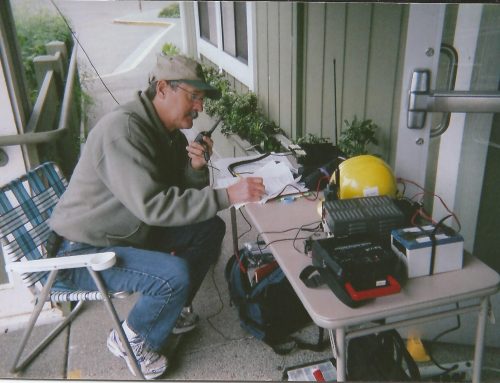Several years ago, volunteer neighborhood emergency response teams in Petaluma promoted the use of amateur radio operators (Hams) as communicators when most normal communication tools might be inoperable due to a major disaster and the loss of power. One of my earlier blogs, “Calling All Hams,” was posted on January 17, 2010 and explained why a local Community Emergency Radio Network (CERN) made common sense in today’s world of earthquakes, floods, hurricanes and tornados.
Last month, a new effort to revive this initiative got underway; however, a new name is being promoted – Neighborhood HamWatch. The NHW idea was created by Andy Gausz (KG4QCO) of the Lake Monroe (Florida) Amateur Radio Society. The following paragraphs have been copied and pasted on this blog for our readers to enjoy.
“The goal of the Neighborhood HamWatch program is to provide a way for every capable Amateur Radio operator who isn’t involved in a deployed active ARES® operation to serve his/her community in an emergency communication role. HamWatch amateurs are good communicators, and have ample stations with emergency power they can use during periods of extended communication outages that often follow major disasters. These amateurs augment the active ARES® volunteers and are active participants of the emergency communications system at the neighborhood level.
Program objectives include: 1) Communicate neighborhood conditions to local EOCs. Emergency Managers will be provided access to first-hand information. They will handle heath and welfare messages, report crime and fulfill other communications needs. 2) Relay information from local Emergency Managers back to their neighbors so they are better informed of relief efforts.
Participation in the program requires operators to have the desire and capability to use their licenses to help their neighbors. There is no special training or equipment burden necessary. A valid license and a 2-meter/UHF radio and/or HF rig will do the job.
Neighborhood HamWatch operators also communicate with ARES® stations that are in direct contact with local government EOCs. Because of commercial outages, this may be the only link to the outside world for a neighborhood. Operators describe neighborhood conditions, medical needs, and dangerous situations to Emergency Managers and staff. Emergency Managers can relay messages back to neighborhoods.
How to get started? An informational brochure is available here, which will help explain the program and can be printed by local hams and distributed to their neighbors. This will acquaint neighbors with their next-door Amateur Radio operators and establish the Neighborhood HamWatch groups. ARES® ECs, and NCS’s can help by including a check-in option for Neighborhood HamWatch operators during or immediately following training nets so participating hams can begin establishing contact familiarity.”
Petaluma area Hams (Zip Codes 94952-53-54) are encouraged to learn more about this neighborhood model by attending the next face-to-face meeting at the Senior Center (211 Novak) on Saturday, February 14, from 10 a.m. to Noon.

